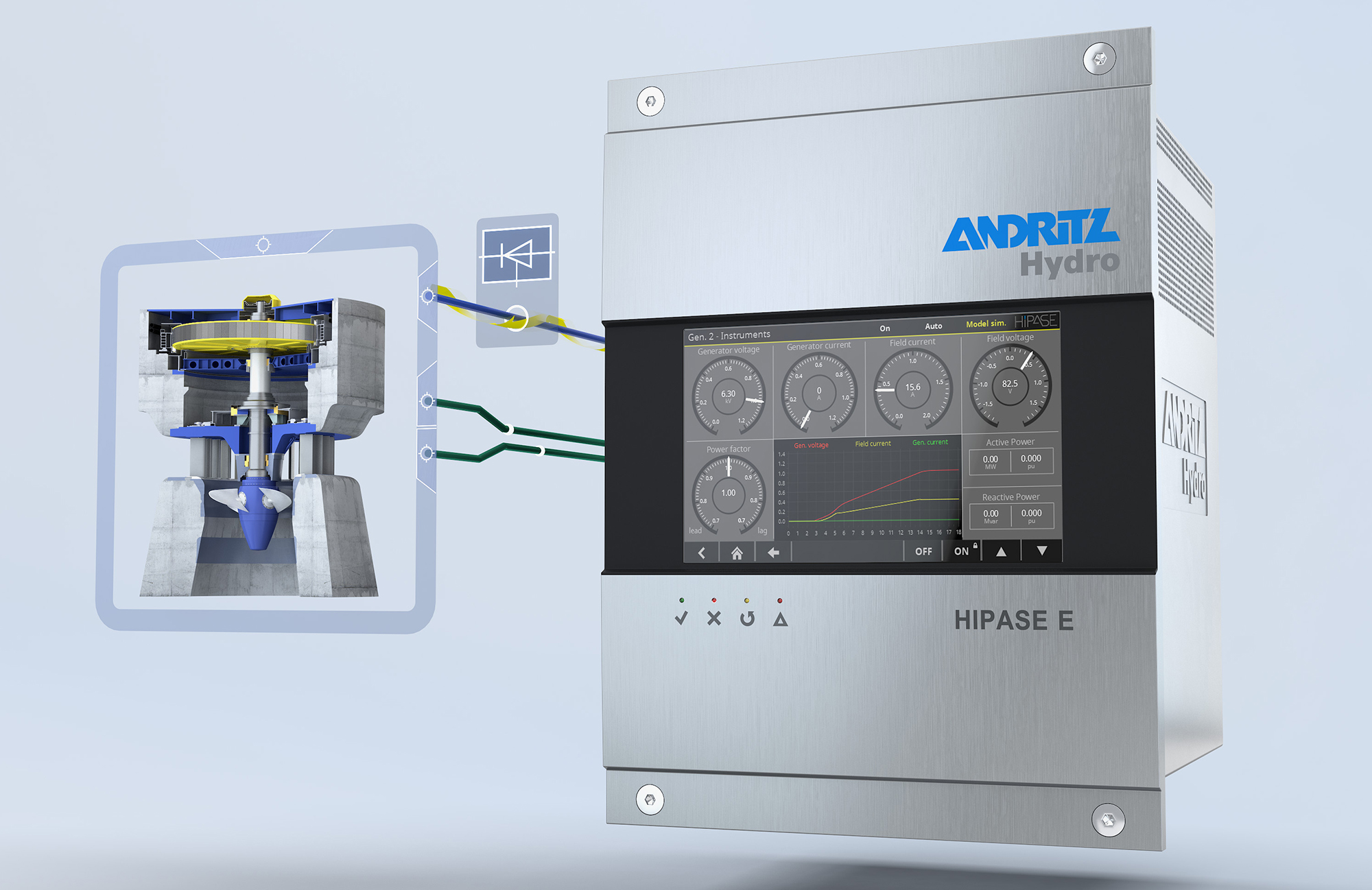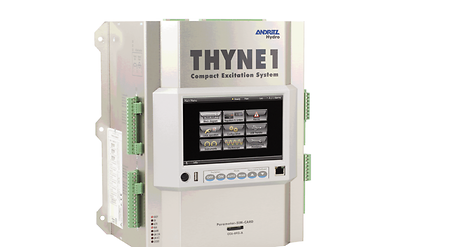
Excitation - Dynamics with brain power
The excitation system of a synchronous generator makes it possible to supply the energy generated by an engine (turbine) to the power grid. As a result, high priority is assigned to the reliability and availability of excitation equipment when choosing systems.
This applies particularly to:
- providing an independent supply of controlled direct current for the rotor
- enabling synchronizing by means of precise voltage control
- supporting grid operations by means of reactive power control
- increasing block and grid availability by means of intelligent limiters and additional automatic controllers.

HIPASE-E
HIPASE-E is an automatic voltage regulator (AVR) with all limiters, additional regulators and a gate control for all synchronous single-and three-phase generators used in a wide frequency range. The AVR has a modular structure and uses the long-term experience of the GMR3 voltage regulator of ANDRITZ Hydro. The proven control and regulator functions were used further and are modified to the latest requirements of power generation.
Limiters and additional regulators may be enabled by the user in respect to the plant requirements.
The HIPASE-E application board includes the field current regulator and the generation of firing pulses for the SCRs. For analogue and digital signal processing, appropriate analogue and digital interface boards are provided.
Using the compact housing (half size 19”), up to 36 digital inputs and outputs may be processed. For advanced applications using a larger amount of input and output signals, a full size 19” housing is used.

ANDRITZ Hydro provides four types of THYNE excitation systems:
- THYNE1 (for small generators with or without exciter machines, up to 25 A field current)
- THYNE 400 (for generators with exciter machines, up to 400 A field current)
- THYNE 500 (static excitation for generators with slip rings, up to 4000 A field current)
- THYNE 600 (static excitation for generators with slip rings, up to 10000 A field current)

THYNE1 compact excitation
The THYNE system stands for:
- Sophisticated technology and know-how
- Decades of research and experience in the development of excitation systems
- Highest availability and efficiency
- Long lifetime of about 30 years and more
- Robustness and high MTBF time
- Comprehensive services, spare part guarantee for many years, and training classes complete our scope of delivery.
Comprehensive services, spare part guarantee for many years, and training classes complete our scope of delivery.
Nowadays rotary pilot exciters are being replaced more and more by thyristor excitation systems. If it is economically justifiable to retain pilot exciters and there are no high demands made regarding regulating dynamics and improvement of efficiency, operating performance can be improved by replacing an existing voltage regulator with a modern, digital multi-function automatic controller. A static excitation system is supplied via an excitation transformer from a power source. Should the source be the generator stator itself, we refer to a “shunt field excitation system”. If the excitation transformer is connected to an external power source, for example an AC generator mounted on the rotor shaft, or to the auxiliary supply of the plant, it is referred to as an “excitation system with external supply”. The output voltage of the excitation transformer is rectified and controlled by a thyristor bridge, and feeds the field winding via the rotor brushes.
A further possibility is to use a rotating exciter machine, which can either be a brushless AC exciter with flywheel diodes or, especially in older plants, a DC exciter machine. The flywheel diodes are mounted on the common shaft of generator and rotating exciter, and supply the DC current for the rotor. A six-pulse thyristor unit controlled by a voltage regulator regulates the exciter field.